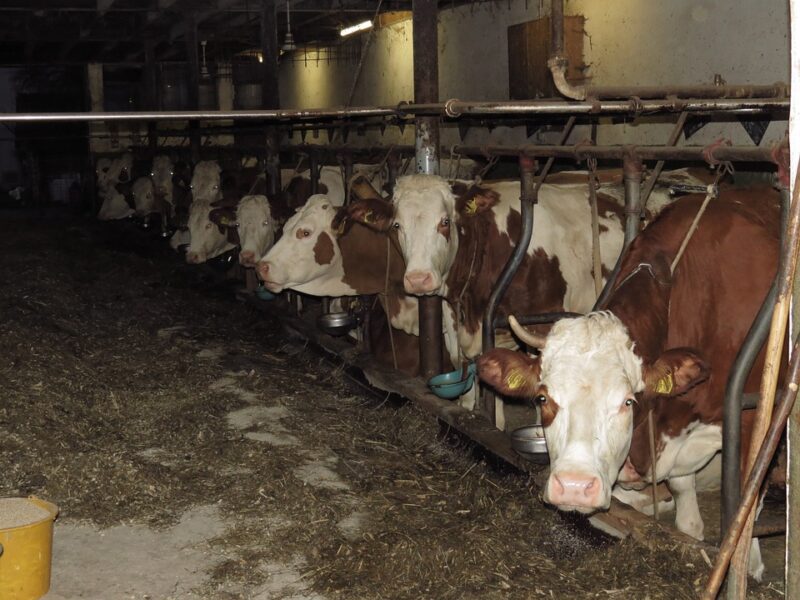Blog by Ambassador Oluwatosin Akinwotu
This blog by Oluwatosin Akinwotu working in Nigeria is the fifth blog in a new series by AMR Insights Ambassadors.
AMR and the environment
My name is Oluwatosin Akinwotu and I am a PhD candidate in Environmental Microbiology at the University of Ibadan, Nigeria, with over 8 years of experience in microbial ecology and Antibiotics Resistance-related research. I am currently focusing on the ecology of Antibiotics-resistant Enteric bacteria in wetlands in low-medium-income countries (LMICs). I am the founder of the Combat Antimicrobial Resistance Initiative (CARI-X), an establishment on the mission to strengthen the global war against AMR by engaging in AMR Stewardship using the “One Health” approach. I keep demonstrating quality leadership in AMR-related public speaking, engaging cohorts of young professionals globally on how to mitigate the continuous proliferation of AMR and “Superbugs”. Also I have joined several organizations to engage in regular AMR awareness and Infection Prevention and Control (IPC) Sensitization programs.
Environmental Impacts of Agricultural (Farmland) Wastewater
Wastewater, also known as sewage, is water that is contaminated with human and animal waste, chemicals, and other pollutants. Wastewater is frequently discharged into the environment from a variety of sources including agricultural farm settings. When released into the environment, it can have devastating effects including pollution and contamination of water sources (surface water and groundwater sources), harm wildlife, and contribute to climate change.
Contaminants from wastewater can include nutrients, heavy metals, pathogens, and toxic organic and inorganic chemicals (including antimicrobial compounds), all of which can be harmful to human and animal health, and the environment.
Agricultural wastewater (or farmland wastewater) is generated from livestock manure, aquaculture ponds, agricultural runoff, and irrigation water. These waste waters can contain high concentrations of blood, faeces, carcasses (including bones and feathers), nutrients (feeds), heavy metals, and other organic and inorganic compounds as well as antibiotics. The antibiotics usually present in these waste waters can be classified into different groups based on their chemical structure and mode of action. These groups include tetracyclines, sulfonamides, macrolides, fluoroquinolones, and beta-lactams.

Figure 1: Untreated agricultural wastewater generated from a cattle farm
Spread of Antimicrobial Resistant pathogens and resistance genes
Several farm practices potentially aid the spread of AMR in humans, animals and the environment. The wide use of antibiotics is common in livestock, poultry and aquaculture production to promote growth, prevent disease, and treat infections. However, the overuse and misuse of antibiotics in agriculture can lead to the contamination of agricultural wastewater with antibiotic residues, which contributes to the development and spread of antibiotic-resistant bacteria. If not well-managed, has negative effects on humans, animals and their shared environments.
The continuous prophylactic use of antibiotics in livestock and aquaculture farms usually leads to the accumulation of unmetabolized fractions of these antibiotics in their tissues and feces. Manures and compost made from such livestock operations are often used as fertilizers in crop production. Antibiotics in agricultural wastewater percolate in the soil and groundwater through a process known as leaching following irrigation or rainfall. This process disrupts the microbial communities in the environment and imposes negative impacts on the ecosystem functions such as decomposition and nutrient cycling.
It is worrisome that it is a common practice in some parts of sub-Sahara Africa to engage in farm irrigation with already generated wastewater, including those from livestock operations, which can spread diseases, toxic organic and inorganic compounds, antibiotic-resistant bacteria and genes to the receiving crops and the environment at large.
Other Environmental Impacts of Agricultural Wastewater
Due to the presence of high levels of nutrients, including nitrogen and phosphorus, agricultural wastewater, when released into waterways, can contribute to the growth of algae and other aquatic plants. This occurrence is known as algal blooms, which can have negative impacts on aquatic ecosystems. Algal blooms result in the depletion of oxygen levels (hypoxia) in the water, resulting in the death of fish and other aquatic animals. Agricultural wastewater can also have indirect effects on wildlife, such as altering the habitat of species, reducing the availability of food, and increasing the risk of disease. This in turn affects the ecosystem structure and functions. Farmland-generated wastewater contains high levels of organic matter, including animal waste, feed waste, and other organic compounds. When these materials are released into the environment, they can contribute to the growth of bacteria and other microorganisms. This can lead to the depletion of oxygen in the water and the creation of “dead zones” where aquatic life cannot survive. This may result from a prolonged algal bloom. Elevated nutrient levels and algal blooms can also cause problems in drinking water in communities nearby and upstream from dead zones. Harmful algal blooms release toxins that contaminate drinking water, causing illnesses in animals and humans. Agricultural wastewater also contains a variety of greenhouse gases, such as Methane, Nitrous oxide and Carbon dioxide, which can contribute to global warming.
Overall, agricultural practices can be a significant source of antibiotic-resistant bacteria and genes in the environment. Strategies to reduce the use of antibiotics in agriculture, improve waste management practices, and promote sustainable agriculture can help to minimize the spread of antibiotic resistance and protect public health. It is also important to reduce wastewater discharge into the environment and to properly treat wastewater before it is discharged. This will help to minimize these impacts and protect the health of ecosystems and the organisms that rely on them.

